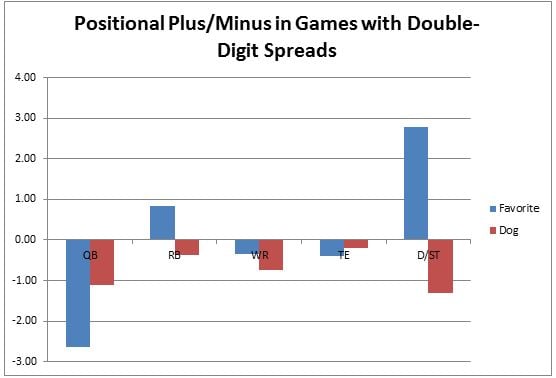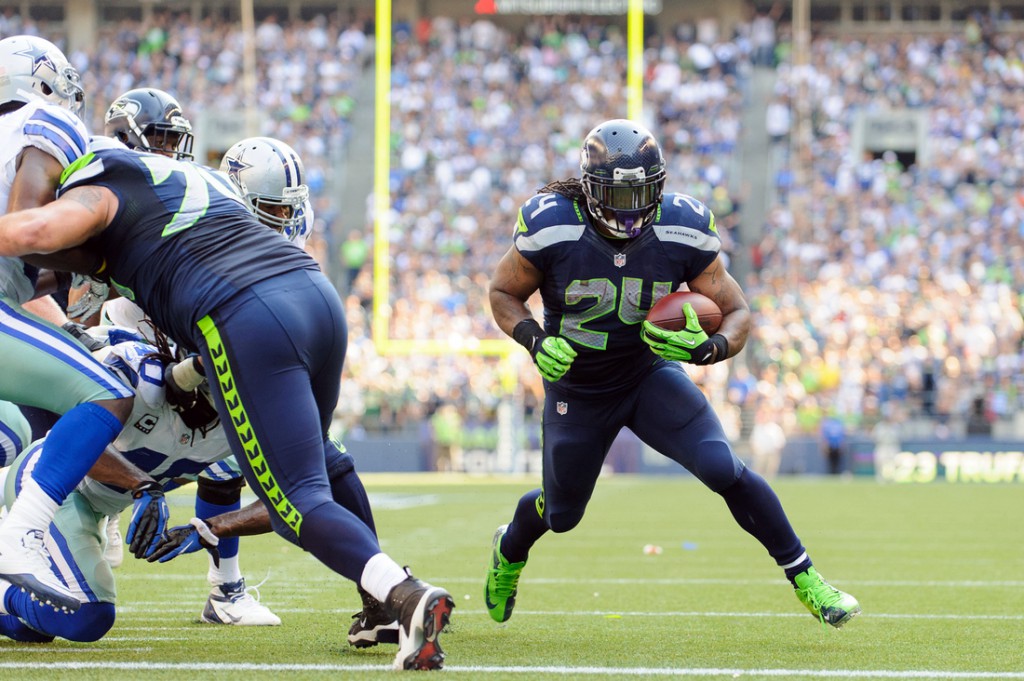When evaluating potential plays for NFL DFS, we typically naturally break them down into two specific categories: safe or volatile. And really, this is just because of the two different types of contests on DFS sites: cash and tournaments. When we look at the safety or volatility of a player, it’s usually in that light – we want safe plays for our cash games and volatile (with upside obviously) ones for tournaments.
However, safety and volatility isn’t just about projected fantasy points and the odds of a player hitting their ceiling. It’s also about ownership percentages, and I’m not sure that we think about that enough when we think about whether a player should be cash versus tournament play, or neither, or both. Let me explain with a specific example.
Marshawn Lynch has been haunting me this entire week.
The Seahawks are in an interesting position in Week 3 – they’re a desperate 0-2 at home against a really bad team and backup quarterback. The spread is huge (Seahawks -14.5) and there’s a fairly good chance that the game is over by halftime. So, what do you do? Do you play Lynch or not? Cash games or tournaments? Both?
In my opinion, you pore over the data and make the best decision possible. So, I did. The Fantasy Labs twitter account tweeted this trend about RBs in games with spreads 14 or higher.
In the last year, 6 RBs have been in Marshawn Lynch's situation (a >14-pt favorite at home). Here's how they fared. pic.twitter.com/fyqJOFyoOc
— FantasyLabs (@FantasyLabs) September 22, 2015

Here’s my dilemma – the double-digit spread data encourages me to play Lynch in all contest formats. However, it seems that the value over RBs gets lower as the spread increases, as shown in the tweet. However, again, the sample size is admittedly small and it could be noise or it could be good data. The point is, I don’t know.
This is where we get into how players are not only safe or volatile in regards to potential fantasy point outcomes, but also in regards to ownership. I’ll take you through my thinking this week on Lynch. Although I believe Lynch is riskier than the public thinks, I have to use that fact and play him in cash games because of the data on double-digit favorites and the fact that he’ll be in all cash games. It’s too risky not to use him in cash, even though I think the situation is rikiser than people realize.
For tournaments, it’s the opposite – I’m going to fade him more than not (not a complete fade though) because the data is inconclusive to me. The numbers on RBs with that large of a spread is a very small sample size, but that doesn’t automatically mean it’s wrong. The point is I don’t know whether it’s risky (anecdotally, I think it is but that’s just my personal opinion), and when I don’t know, I’m going to limit my exposure to that player, especially when he’s projected to be so highly owned.
I know this article is a bit abstract, and while 99% of mine are going to be all about data, I did want to share my thoughts on this topic because it’s been the biggest part of my lineup building this week. Not only am I judging Lynch’s safety and upside in terms of fantasy points, I’m also – and probably even more than fantasy points – judging his safety and upside in terms of ownership. DFS contests are multi-variable, and if you can properly assess both fantasy points outcomes and ownership issues, you’ll find yourself winning a lot of contests.





